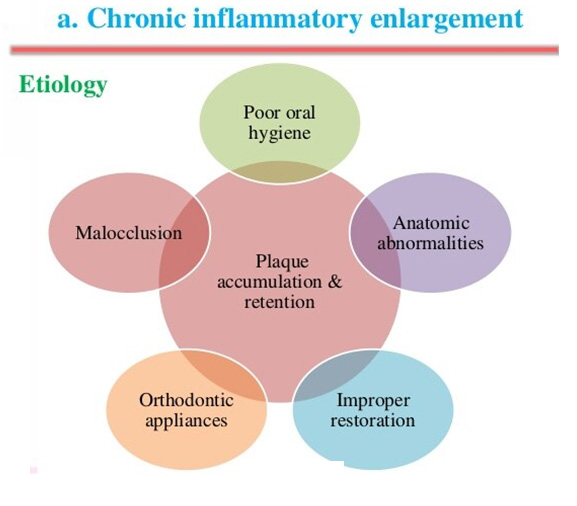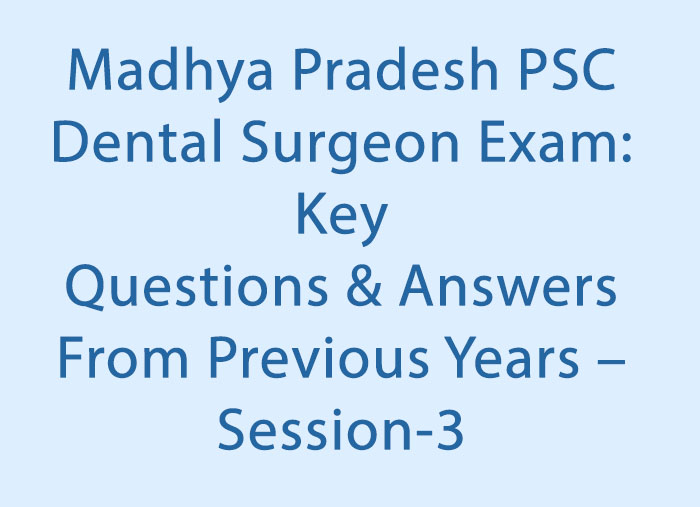- NEED HELP? CALL US NOW
- +919995411505
- [email protected]
Gingival Enlargement
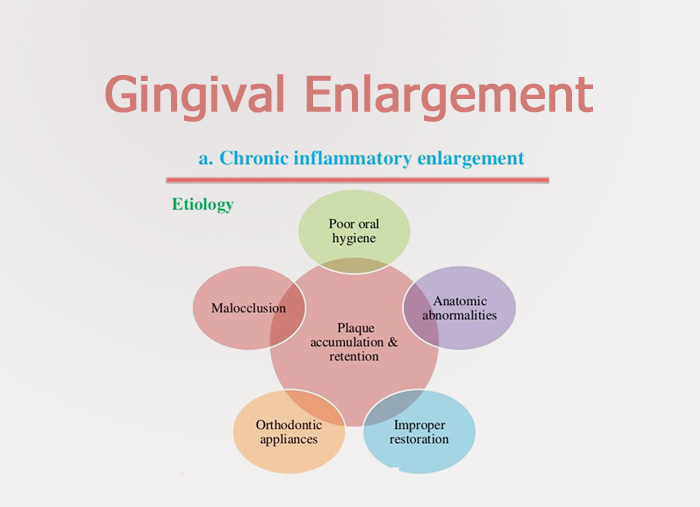
The many types of gingival enlargement can be classified according to aetiologic factors and pathologic changes as follows:
| Hereditary gingival enlargement | ● Familial gingival enlargements |
| Inflammatory enlargement | ● Chronic
● Acute |
| Drug induced enlargement | ● Non inflammatory Fibrotic gingival enlargement is a side effect of: Convulsants- Phenytoin Calcium channel blockers- Nifedipine, Nitrendipine Immunosuppressant drugs- Cyclosporine Tacrolimus is another immunosuppressive, which causes very less gingival overgrowth. 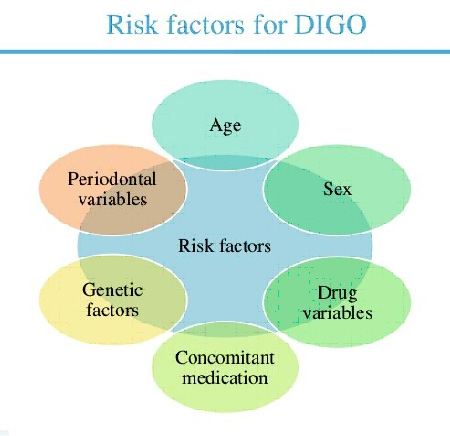 |
| Enlargements associated with systemic diseases | A. Conditioned enlargement ● Pregnancy ● Puberty ● Vitamin C deficiency ● Plasma cell gingivitis ● Non specific conditioned enlargement (granuloma pyogenicum) B. Systemic diseases causing gingival enlargement ● Leukaemia ● Granulomatous disease (Wegeners granulomatosis, Sarcoidosis) 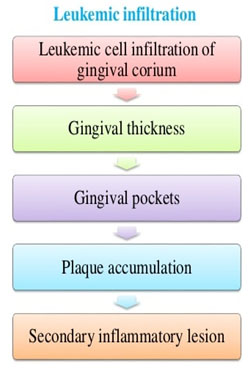 |
| Neoplastic enlargement(gingival tumours) | ● Benign tumours of the gingiva ● Malignant tumours of the gingiva |
| False enlargement | ● Underlying osseous lesions ● Underlying dental tissues |
| GINGIVAL ENLARGEMENT | LOCATION |
| ● Chronic inflammatory ● Gingival abscess ● Drug induced ● Pregnancy, puberty |
Marginal and interdental gingiva |
| ● Fibrotic ● Idiopathic ● Leukaemic ● Plasma cell gingivitis |
Marginal, interdental and attached gingiva |
| THE DEGREE OF GINGIVAL ENLARGEMENT SCORES | |
| Grade 0 | No signs of gingival enlargement |
| Grade I | Enlargement confined to interdental papilla |
| Grade II | Enlargement involves papilla and marginal gingiva |
| Grade III | Enlargement covers three quaters or more of crown |
Click here to view QA and Description for Gingival Enlargement
Related posts
April 10, 2025
April 9, 2025
April 4, 2025

